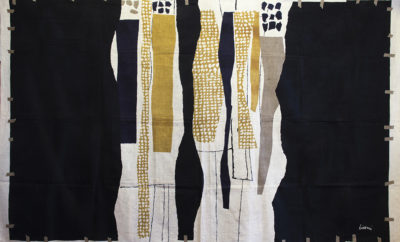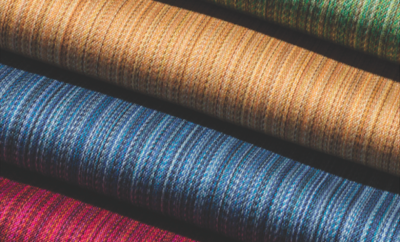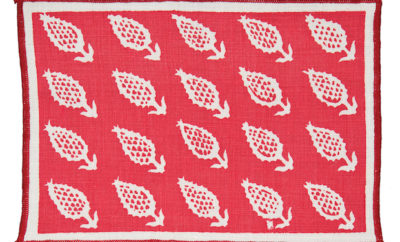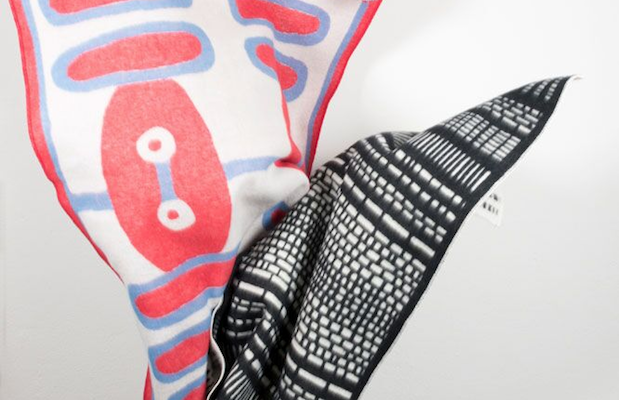 Image courtesy of ZigZagZurich.
Image courtesy of ZigZagZurich.
Design
Memphis, Post Crisis: A conversation with Nathalie du Pasquier and George Sowden about their new collection
The evolution of an artist may seem like a natural progression, time taking its course. However, as Nathalie du Pasquier, a founding member of the Memphis Group, has learned that even with a distinct vernacular, the course isn’t always obvious or linear. The designer-artist’s bright brash colors and amorphic pattern-patching and color-blocking patterns helped to usher in a new aesthetic in the 1980s, upending the hegemony of modernism and inspiring the youth generation to revisit and revive Memphis in the last few years. For Pasquier, however, that “Memphis look” has morphed into scintillating expressions that span from evocative canvases, most recently seen at the ICA Philadelphia to rave reviews, to textiles, such as the latest line she designed this year with her partner and fellow Memphis co-founder George Sowden for Zig Zag Zurich, the curated Swiss design emporium. These blankets and pillows, wrapped under the duo’s socially conscious project dubbed CoopDPS, were designed as the “Post Crisis Collection,” which not only employs color to arresting effect but engages the urgent cry against consumerism. Here, Pasquier and Sowden discuss their artistic development, the current moment’s obsession with Memphis, as well as the ideology behind CoopDPS.
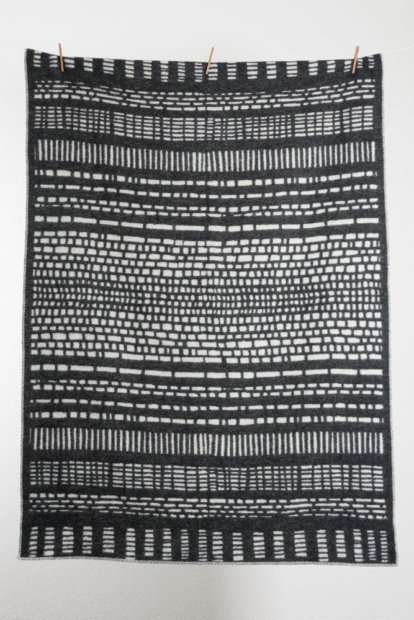
Image courtesy of ZigZagZurich.
Julie Baumgardner/Modern Magazine: In your words, what led you to formulate CoopDPS and create this “Post Crisis Collection?” Why did you want to work again with ZigZag?
George Sowden: Nathalie and myself were looking for an opportunity to start CoopDPS, which is an organization through which we will work together. ZigZagZurich (ZZZ) contacted us at just that right moment when we were ready, impatient to start and had some time.
Nathalie du Pasquier: Yes, we wanted to have a project together.
GS: We wanted to spend more time together.
NDP: We had not worked together for ages. We live together but a project together is something else. Usually I work on my own.
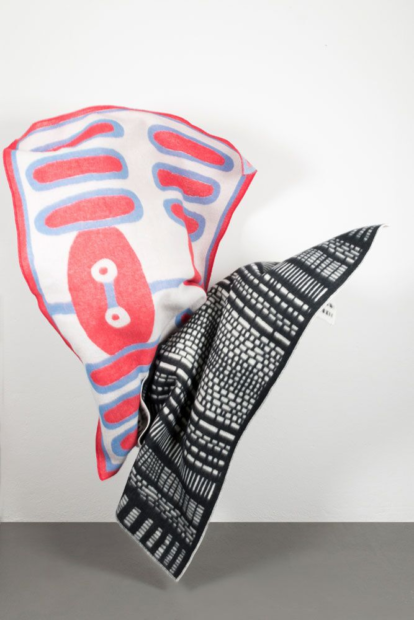
Image courtesy of ZigZagZurich.
JB/MM: How do the aesthetics and production of these products reflect the ethos of CoopDPS and take the name “Post Crisis Collection”?
GS: Crisis is a term I coined to describe the change that has happen, since the 2008 crash, in our attitude towards consumer goods. We have become acutely aware of the damage we have done with mass production, waste, and pollution, as well as with our general disregard towards our environment. Our “post crisis” awareness could help to create a new approach to manufactured goods and consumerism based on sensitive consideration for our planet and decisions made by a real analysis of need, as to what our future could be. Our future cannot only be an economical or GNP value.
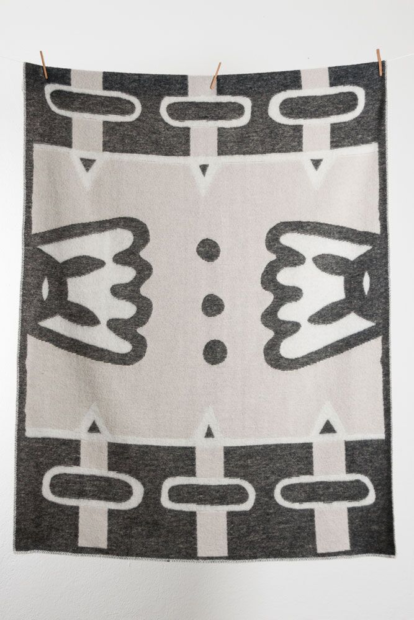
Image courtesy of ZigZagZurich.
JB/MM: You’ve said before that the work created by Memphis was a project of “the New International Style.” Especially in the last five years, younger designers across the world are really looking to Memphis and referencing it in their work. Did you expect that Memphis would become such a twenty-first century global influence?
GS: Memphis was a defining moment in late design—it became a movement that influenced the aesthetics and identity of global design since our first exhibition in Milano, 1981. As such, it will never go but will be forever discussed and criticized, added to, copied, and constantly reinterpreted by generations to come.
Nathalie’s patterns from the Memphis years, as an example, are very iconic to the spirit of that time. The fashion industry is always digging into the past and using codified energy that is easy to copy and easy to be understood. From a commercial point of view, it was inevitable that this would happen to Nathalie as it has to many other original creative ideas, which are embedded in our visual consciousness. It is easy for the fashion industry to turn original energy into quick money, or for marketers to unforgivably snatch from history and use Mozart to sell breakfast cereal.
NDP: I don’t care so much either. I am catching the air of my time. I am not inventing something incredibly important like penicillin.
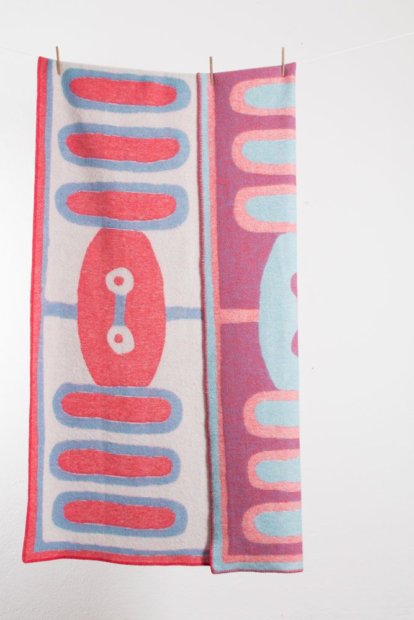
Image courtesy of ZigZagZurich.
JB/MM: You’ve also said that the use of color was a serious reaction to modernism. And, how does that factor into the pieces you created for the CoopDPS collection?
NDP: We always use color seriously. The modernists also used color—Le Corbusier, for example, had an extraordinary poetic sense of its use, as did Johannes Itten of the Bauhaus. We use colors seriously in the DPS collection, black and white is somehow very reassuring.
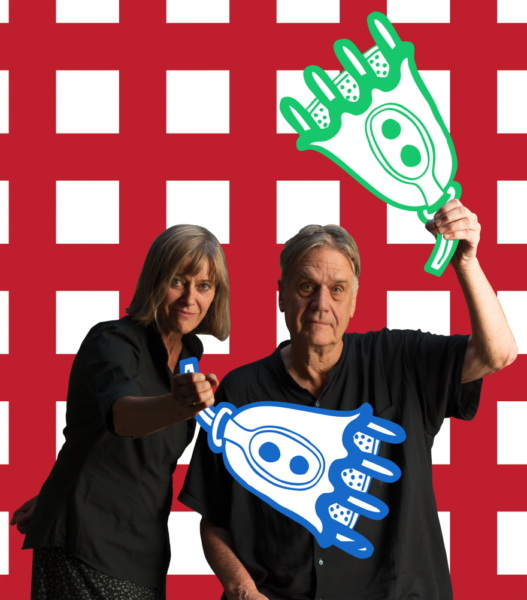
Image courtesy of ZigZagZurich.
JB/MM: Do you ever feel weighed down by your own or Memphis’s legacy? Do you see your work now as carrying that history with it, or did you evolve into your own separate entity?
NDP: Thoughts about what is ideal can happen at any time, it is never a burden—[it can happen when] walking, the moment you wake up, talking to a friend, reading the newspaper, or reflecting on what should be done generally to make improvements. However the creative process can be slow, and between the moment of an idea and the reality of making something, many changes will happen—over time everything evolves. We are very happy that Memphis is part of our lives, but we are not in a position to judge the weight of our influence.


